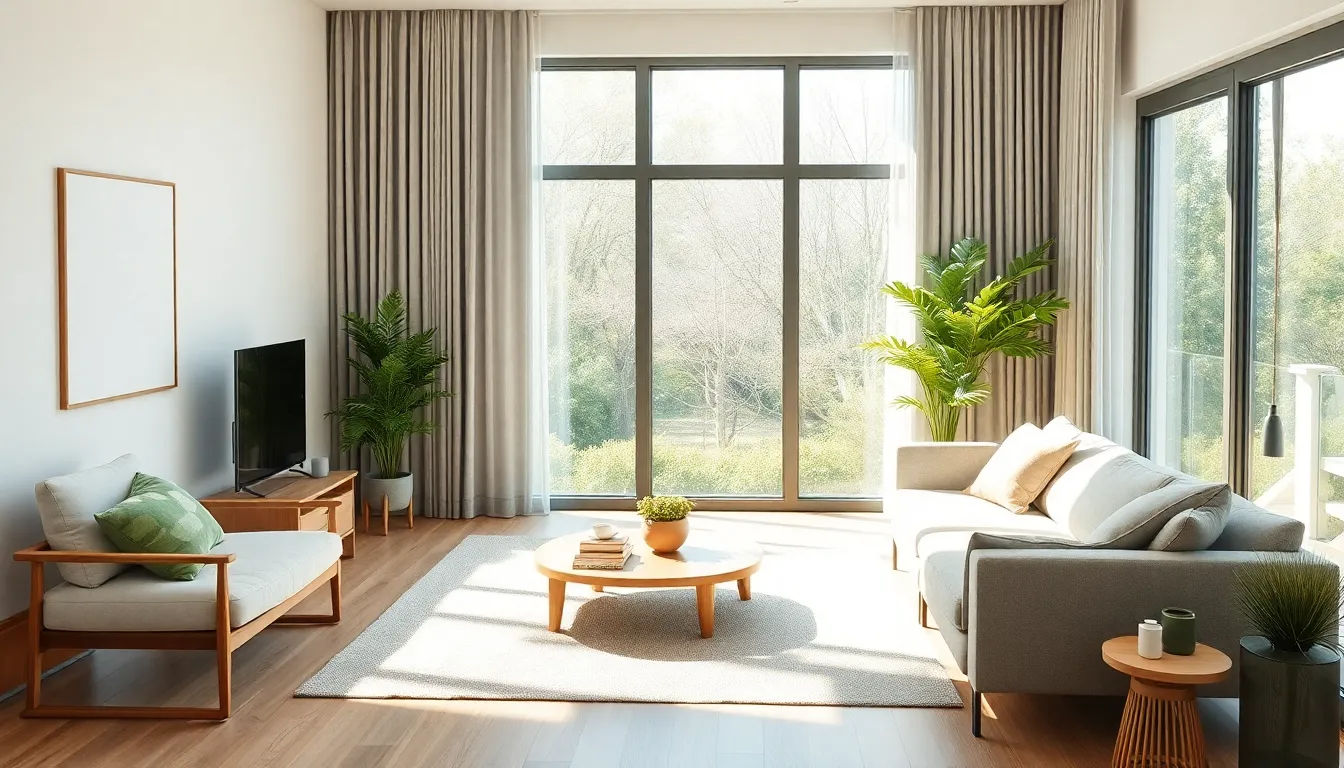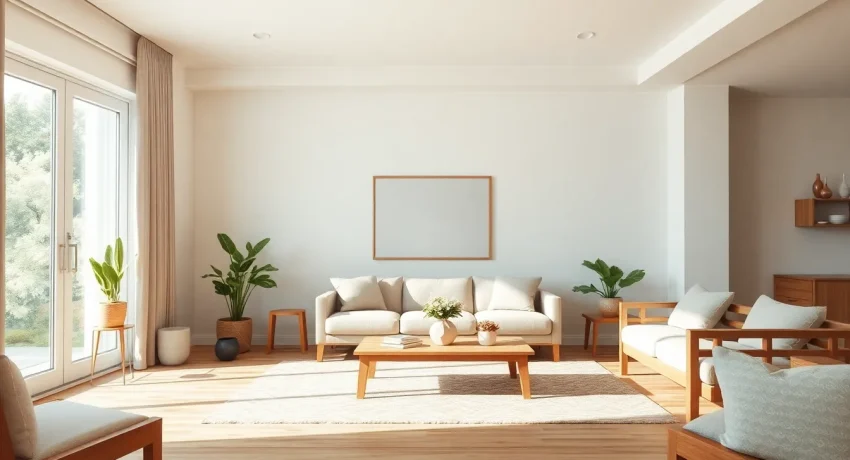In a world buzzing with chaos and clutter, finding tranquility at home feels like searching for a unicorn. But fear not, because zen decorating is here to rescue your space from the clutches of disarray. Imagine walking into a room that whispers serenity, where every corner invites you to take a deep breath and relax. Sounds dreamy, right?
Zen decorating isn’t just about minimalism; it’s an art form that combines simplicity with purpose. By incorporating natural elements and calming colors, anyone can transform their home into a peaceful sanctuary. So grab that paintbrush and let’s dive into some zen decorating ideas that’ll have you saying goodbye to stress and hello to bliss.
Table of Contents
ToggleUnderstanding Zen Decorating Ideas
Zen decorating emphasizes tranquility and intentionality in home spaces. This approach fosters a relaxing atmosphere that enhances well-being.
What Is Zen Design?
Zen design embodies simplicity and tranquility through decor choices. Spaces focus on natural materials, soft colors and minimal clutter. Furniture often features clean lines and functional shapes. Nature plays a significant role; plants, stones and water elements integrate into design schemes. Natural light enhances each area, promoting a sense of calm. By prioritizing balance, zen design encourages harmony among all elements.
The Philosophy Behind Zen Decor
Zen decor centers on mindfulness and serenity in everyday life. It draws inspiration from Zen Buddhism, where simplicity leads to clarity and peace. Individuals apply careful consideration to each decor choice, ensuring that every item serves a purpose. A curated selection of decor fosters emotional well-being and encourages self-reflection. Practitioners often experience a mental shift, leading to reduced stress and enhanced focus. Spaces should feel open, inviting and harmonious, allowing occupants to reconnect with themselves.
Key Elements of Zen Decorating

Zen decorating embodies elements that promote a tranquil living environment, enhancing mindfulness and peace at home. Key principles include minimalism, simplicity, and the use of natural components.
Minimalism and Simplicity
Minimalism serves as the foundation of zen decorating. This approach encourages the reduction of excess and prioritization of essential items. Clutter-free spaces foster a sense of calm, allowing the mind to rest. Simple furniture pieces feature clean lines and serve a functional purpose. Practitioners often choose decor that evokes simplicity, which supports relaxation and openness. Each element within the space should contribute positively to the environment.
Natural Materials and Colors
Natural materials play a crucial role in zen decorating, creating a connection to the outdoors. Wood, stone, and bamboo invoke a sense of tranquility and grounding. Color choices lean towards calming shades like soft greens, neutral tones, and earthy hues. These colors promote serenity and enhance focus. Natural light becomes essential, saturating spaces with warmth and positivity. Incorporating plants adds life and promotes a calming atmosphere, reinforcing the connection to nature and creating a sanctuary for peace.
Ways to Implement Zen Decorating Ideas
Implementing zen decorating ideas creates a harmonious atmosphere throughout the home. Each room serves as a canvas for serenity and mindfulness.
Living Room Zen Decor
Start with furniture that features clean lines and organic shapes. Incorporate a muted color palette with soft greens, beiges, and grays to promote relaxation. Select minimal accessories to reduce visual clutter. Introduce natural elements, such as potted plants or wooden decor. Choose fabrics like cotton and linen that add to the overall tranquility. Position seating to encourage conversation and connection, allowing for an inviting and warm environment.
Bedroom Sanctuary: Creating a Zen Space
Design a peaceful bedroom that encourages restful sleep. Utilize a simple color scheme with cool, calming shades. Allocate space for a few key furnishings, such as a low-profile bed and soft bedding. Add blackout curtains to control light and sound. Integrate elements like essential oil diffusers or natural bamboo for soothing scents. Focus on clutter-free surfaces to create a serene retreat. Keep decorations minimal to foster a meditative atmosphere.
Outdoor Zen Retreats
Transform an outdoor space into a calming retreat. Begin with comfortable seating that invites relaxation. Surround the area with natural plants and flowers to create a soothing environment. Use stones or gravel paths to enhance the connection to nature. Add a water feature, such as a small fountain, to produce soothing sounds. Incorporate outdoor art that resonates with tranquility, such as sculptures or wind chimes. Ensure sufficient shaded areas for all-weather enjoyment, fostering a peaceful escape.
Tips for Maintaining a Zen Environment
A zen environment thrives on simplicity and intention. Incorporating mindful practices ensures clarity and calmness in daily life.
Decluttering and Organizing
Minimal clutter promotes tranquility in any space. Start by evaluating belongings, keeping only items that serve a purpose or spark joy. Utilizing storage solutions, such as baskets and boxes, creates an organized appearance while maintaining easy access. Surfaces should remain clear, allowing for openness and ease. Regularly reassessing possessions aids in continuous decluttering, supporting a consistently zen atmosphere.
Incorporating Nature
Integrating natural elements enhances the tranquil atmosphere. Choose houseplants that thrive indoors, such as snake plants or pothos, which purify the air. Incorporate natural materials like wood or stone in furniture and decor for grounding energy. Use soft lighting to create warmth, mimicking daylight to connect with nature. Open windows to invite fresh air and sounds of nature, fostering a calming environment throughout the home.
Embracing zen decorating ideas can profoundly transform a living space into a serene retreat. By focusing on simplicity and intentionality, individuals can create an environment that nurtures peace and mindfulness. The integration of natural elements and calming colors fosters a connection to nature, enhancing emotional well-being.
Maintaining a zen atmosphere requires ongoing attention to decluttering and purposeful decor choices. By prioritizing essential items and incorporating elements that promote tranquility, anyone can cultivate a harmonious home. Ultimately, the journey toward a zen-inspired space is about creating a sanctuary that reflects personal values and encourages a sense of calm.




